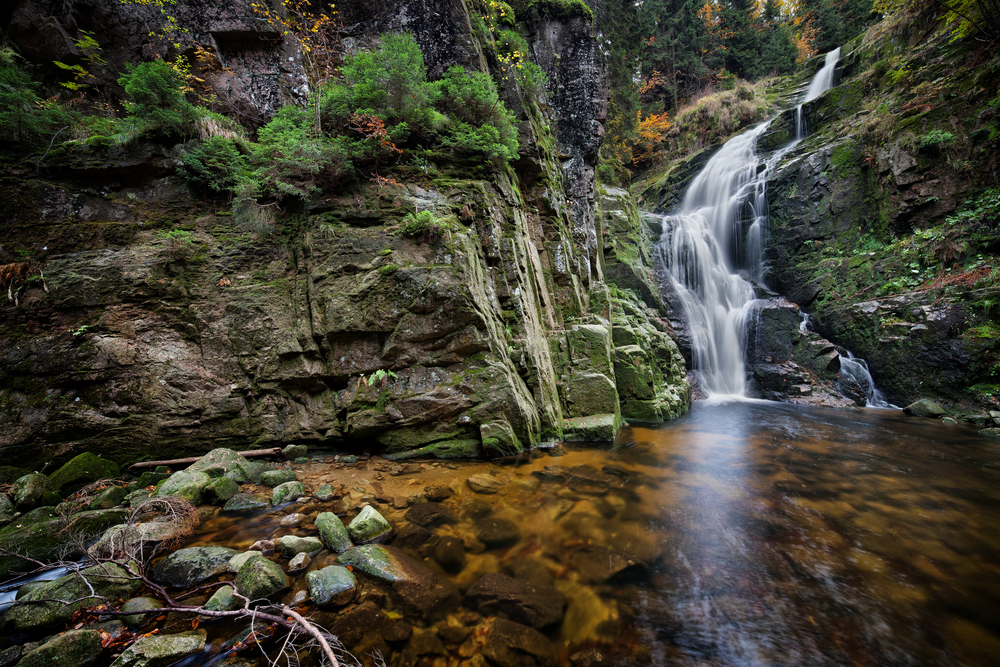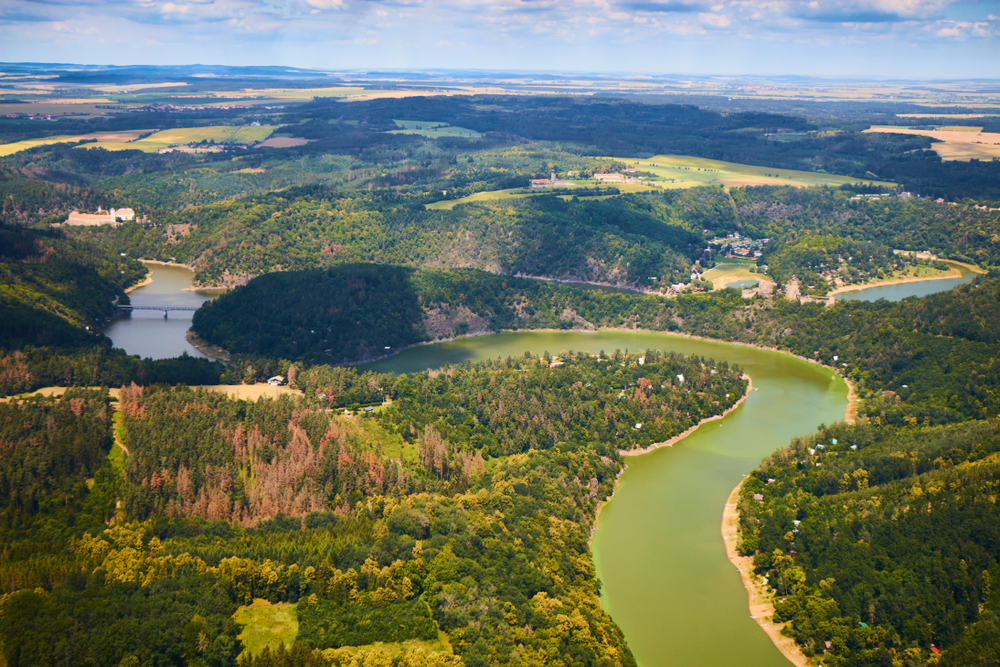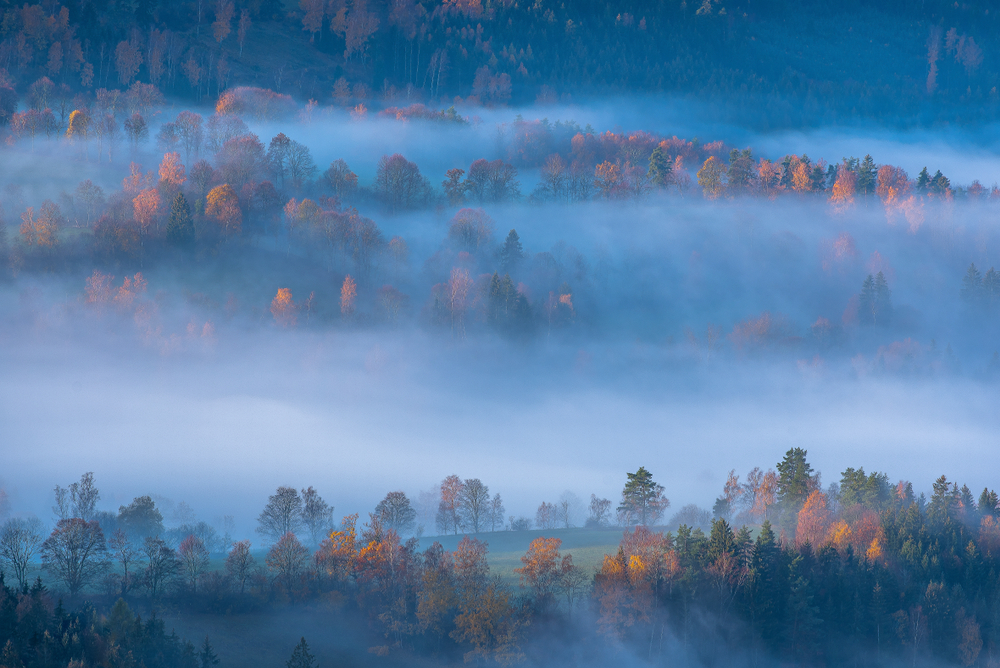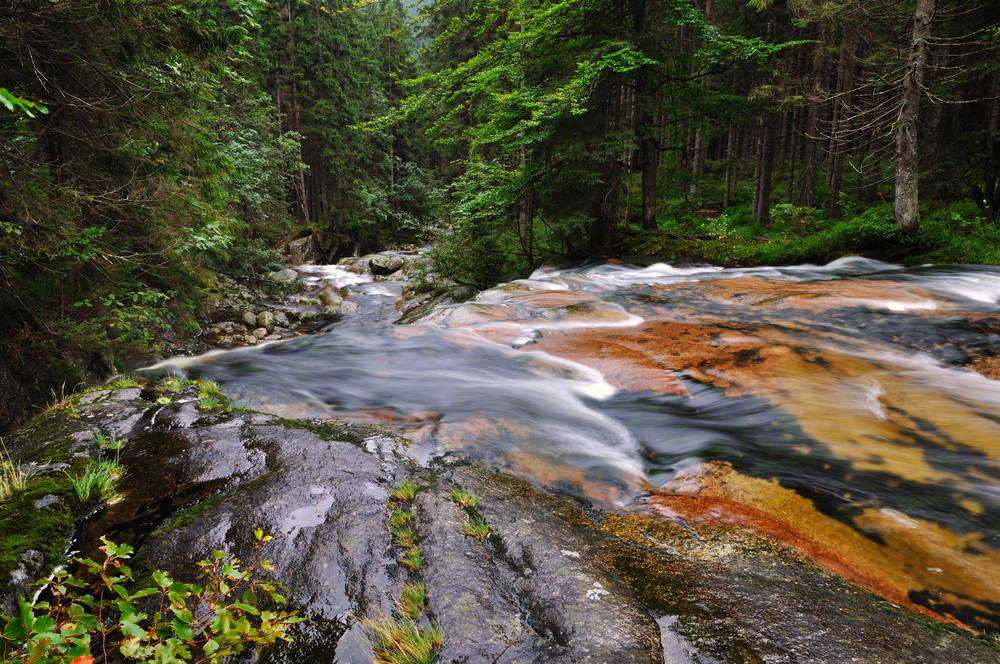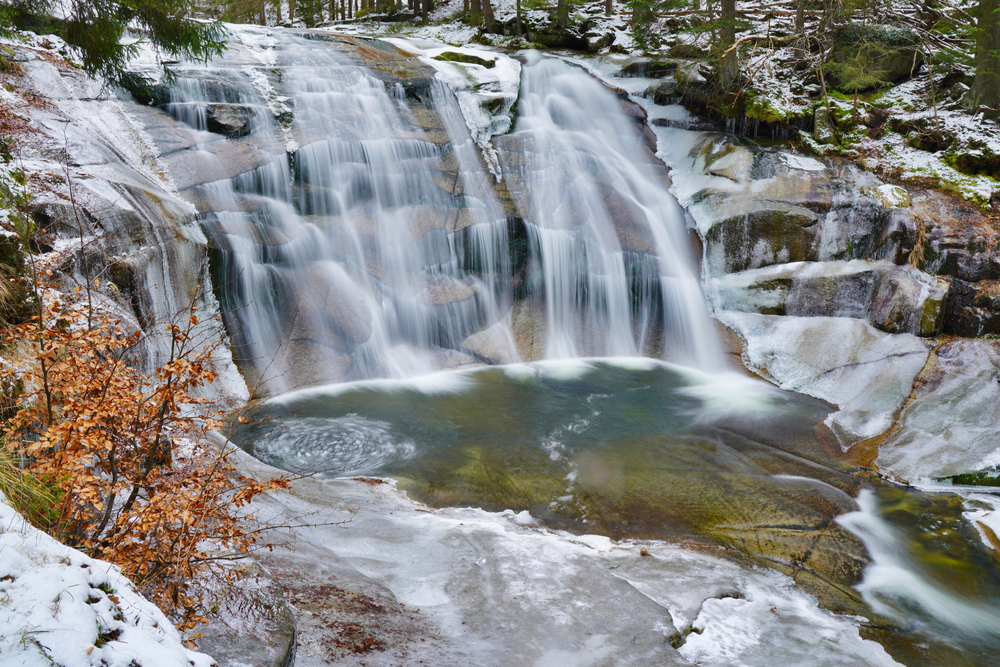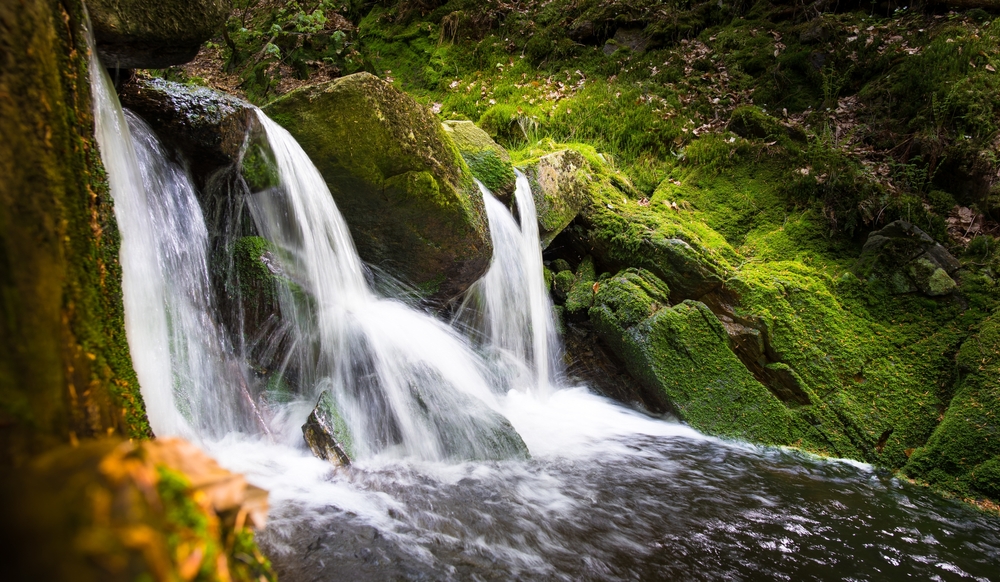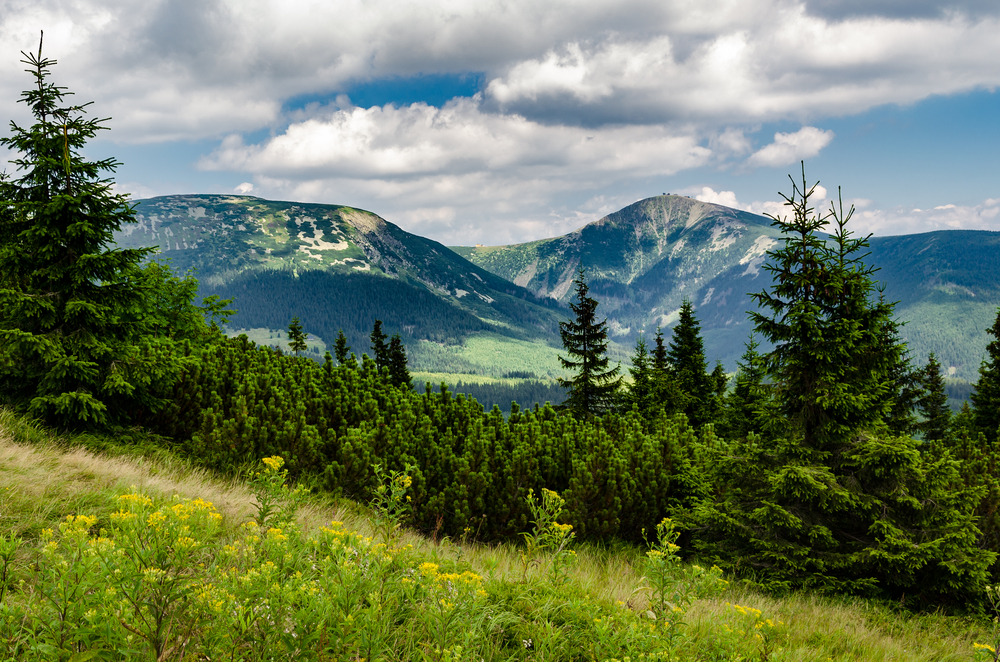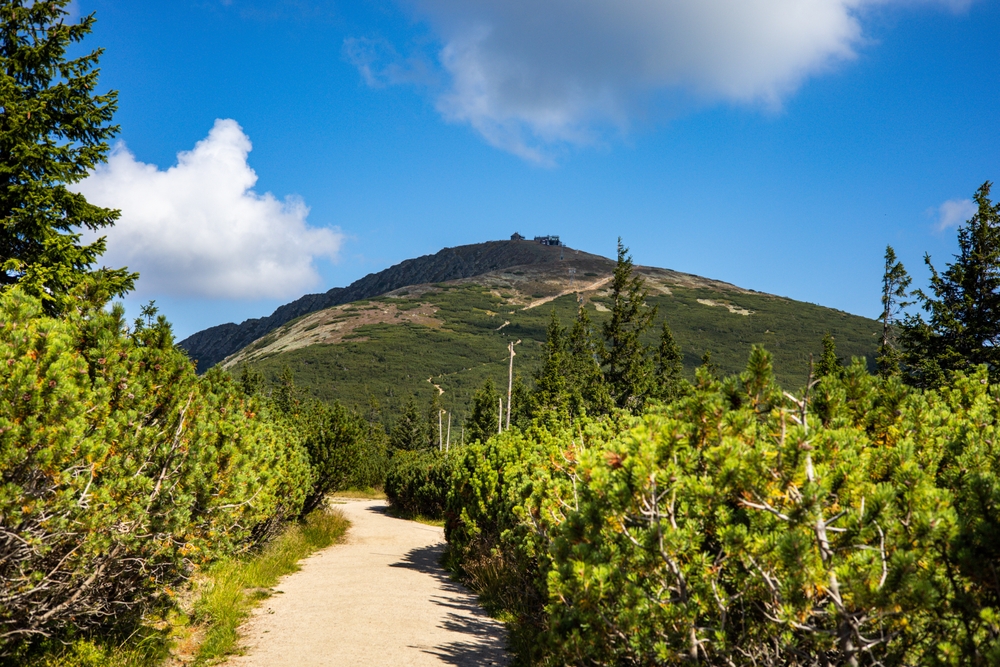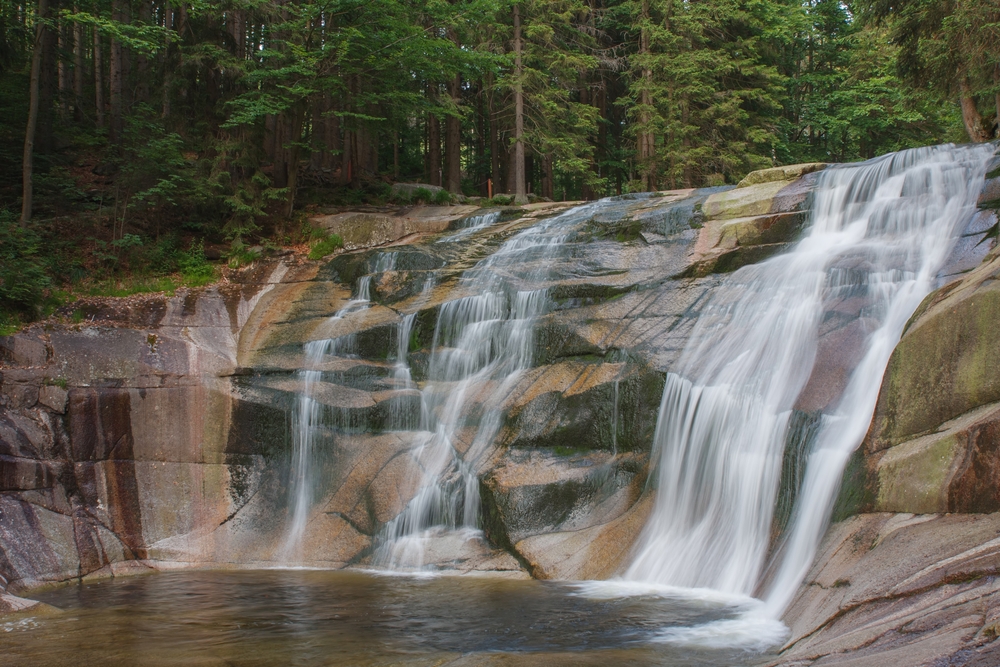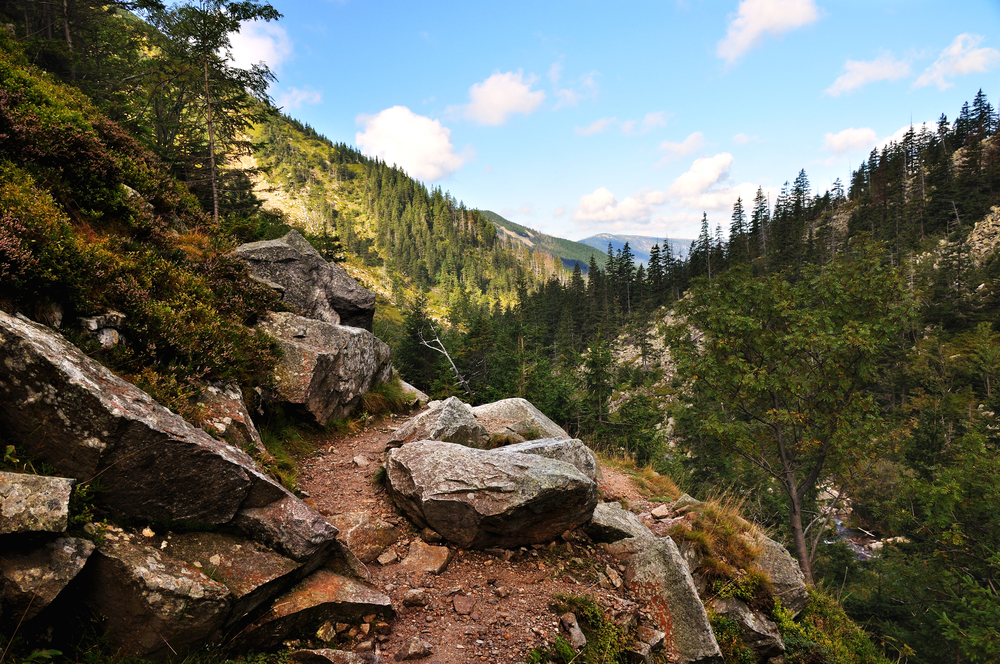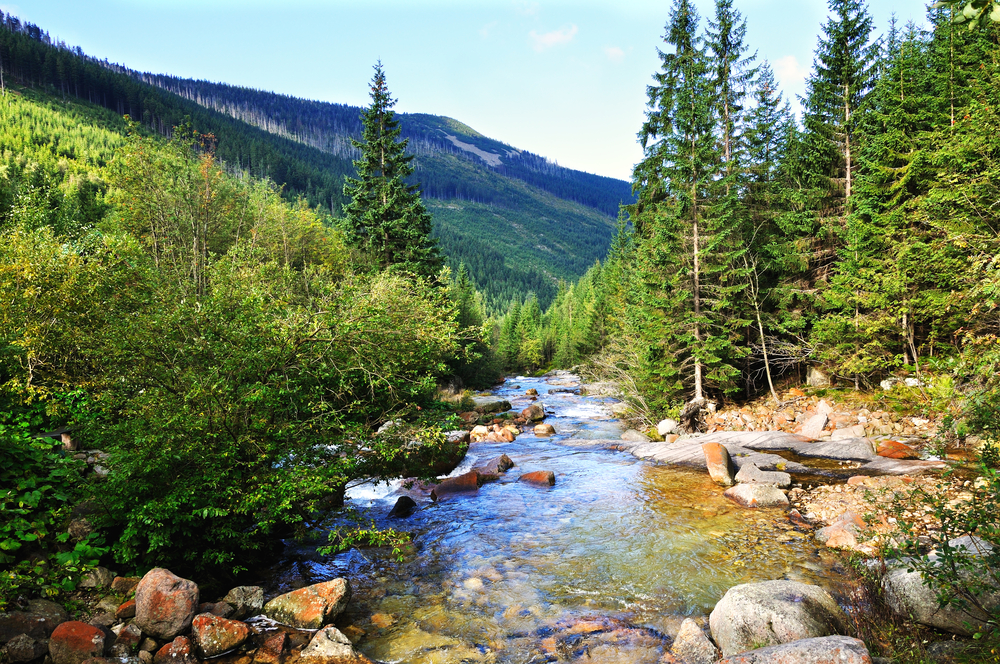Krkonoše Overview
Krkonoše National Park (in Czech: Krkonošský národní park) is located in the Czechia, along the northern border with Poland, in the Krkonoše Mountains, the highest mountain range in the country. Established in 1963, the park covers an area of approximately 212 square miles (550 square kilometers). It is part of a UNESCO Biosphere Reserve and is renowned for its striking alpine landscapes, diverse ecosystems, and the highest peak in the Czech Republic, Sněžka (5,259 feet / 1,603 meters).
The landscape of Krkonoše National Park is characterized by towering mountains, deep valleys, and glacial cirques. Sněžka, the highest mountain in the park, offers panoramic views of both the Czech Republic and Poland. The park features stunning alpine meadows, peat bogs, and glacial lakes, along with fast-flowing rivers and waterfalls, including the Mumlava Waterfall. The park’s rugged terrain makes it a popular destination for hiking, skiing, and outdoor activities.
The vegetation in Krkonoše National Park is highly diverse, due to the varying altitudes and climates. The lower elevations are covered by dense spruce and beech forests, while higher altitudes feature subalpine meadows and alpine tundra vegetation. Rare plants, such as Edelweiss and Arnica, thrive in the harsh alpine environment. The park’s peat bogs are home to unique plant species, including carnivorous plants like sundews.
The wildlife in Krkonoše National Park is similarly varied, with species adapted to its mountainous terrain. Red deer, roe deer, and wild boars are common, while predators such as lynx and foxes are also present. Bird species, including black grouse, peregrine falcons, and golden eagles, can be found in the park. Krkonoše is also home to the alpine marmotand several endemic species of insects. The park’s combination of dramatic landscapes, rare flora, and diverse fauna makes it one of the most treasured natural areas in the Czech Republic.
Park Map
Krkonoše National Park Highlights
Engaging Krkonose National Park
Related National Parks More Czechia
Sources
- Stezka Korunami Stromu, Czechia's Highest Mountains, https://treetop-walks.com/krkonose/en/tourism-destination/, retrieved August 2024.
- KRNAP, Krkonose National Park, https://www.krnap.cz/en, retrieved August 2024.
- Visit Czechia, Krkonose National Park, https://www.visitczechia.com/en-us/things-to-do/places/nature/protected-areas-and-national-parks/c-krkonose-national-park, retrieved August 2024.
- Park Site, Krkonose National Park, https://www.krkonose.eu/en/krkonossky-national-park, retrieved August 2024.
- Wikipedia, Krkonose National Park, https://en.wikipedia.org/wiki/Krkono%C5%A1e_National_Park, retrieved August 2024.








































































